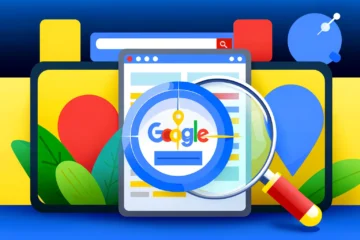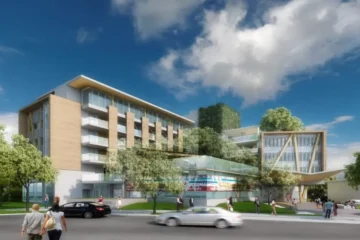Food in Melbourne is known for diversity and originality, but one newer trend has taken over the city and reinvented how people enjoy their meals: food delivery.
With the rise of platforms like Uber Eats, Deliveroo, and DoorDash, more restaurants throughout Melbourne have adopted the service. It is a strategic shift that reflects not only customer demand but also a practical response to challenges and opportunities arising in the hospitality sector.
In this blog, we will go through why restaurants are increasingly pivoting to food delivery and how this is changing the flavoursome Melbourne food landscape.
1. Evolving Consumer Habits: Convenience to the Forefront
People in Melbourne live busy lives, and convenience has become a strong driver of dining behaviour. The customers want their meals to be delivered right to their doorsteps, quite literally, without compromising quality and variety.
The pandemic accelerated this shift to home-delivered meals. People began to expect options delivered on-demand in all types of food. Restaurants put their menus online because that’s what people want.
2. Increasing Reliance on Delivery Apps and Aggregators
The food delivery apps like Uber Eats, Menulog, and Deliveroo offer restaurants greater exposure to more customers. These companies take care of the delivery, allowing even the smallest restaurant to expand their business.
Listing usually comes with commission fees, but the exposure and extra sales prospects are normally well worth the costs. Food outlets in Melbourne have realised that visibility in food delivery apps is essential to continuing the competitive edge in the prevailing market scenario.
3. Dine-In Challenges Mitigated after the Pandemic
Most of the restaurants suffered immensely after the COVID-19 pandemic due to reduced footfall and restrictions to dining in. Restaurants surviving on in-house dining found it challenging, and food delivery became a survival strategy.
Because of uncertainty about possible lockdowns in the future, even when the restrictions have flown out the window, businesses are being extremely circumspect. Many restaurateurs decided to go on investing in their delivery operations and use that as a way of mitigating risk and ensuring their revenues are stable.
4. Growth in Virtual Restaurants/Cloud Kitchens
Virtual kitchens, also known as cloud kitchens, are restaurants that exist only for delivery and do not have a physical storefront. These kitchens have grown in popularity extremely rapidly in Melbourne, due to the lower operational costs when compared to the traditional dine-in restaurant option.
This model lets chefs and entrepreneurs test new concepts, cuisines, and menu items across the city- all without the high cost of renting a big space and hiring waiters. These virtual restaurants focus on delivery only, catering to Melbourne’s growing preference for dining at home.
5. Enhancing Customer Experience with The Help of Technology
Digital ordering systems these days can amass crucial slice of information on customer behaviours. Some cafes across Melbourne use strategic data-driven marketing with the help of a POS system to optimise their menus, promote popular dishes, or run discounts and loyalty programmes.
Additionally, some restaurants have moved to their own branded apps, which cut out third-party middlemen and provide a frictionless, bespoke customer experience. This helps the business to retain control of the customer relationship and dependence on delivery apps.
6. Increase Profit Margins with DIY Delivery Solutions
Some restaurants in Melbourne are fighting back against high commission rates from third-party apps by taking matters into their own hands and installing in-house delivery teams. Running their own delivery services saves money on the commission involved, while promising better food quality and faster delivery times.
7. Social Media Marketing and the Role of Influencers
Social media acts as a strong medium to publicise Melbourne food delivery services. Restaurants advertise their offerings and reach their target advertising through Instagram and Facebook.
Furthermore, food bloggers and influencers create brand awareness, generating hype around the latest menu launches. Most of the food outlets based in Melbourne have also seen massive growth due to using influencer collaborations to drive the sales of delivery.
8. Adapting to Seasonal Trends and Events
Due to the fact that Melbourne restaurants take into consideration seasonal trends, their delivery menus change during the year. Winter options will often include soups and comfort foods, while lighter fare, like salads and smoothies, become popular in the summer.
Christmas, New Year’s Eve, or major sporting events allow restaurants to create special occasions for delivery packages and meal kits.
9. Customisable Meal Kits
Some restaurants have latched on to the meal kit craze in Melbourne by sending diners home with kits that include all ingredients required to make a meal. Step-by-step instructions come with the meal kits so that diners can make restaurant-quality meals rather closely at home.
This concept introduces interactivity into the delivery of food and, therefore, makes meals exciting for families and couples seeking novelty in food at home.
10. Keeping Up with the Competitors in a Fast-Paced Market
The food delivery market in Melbourne is extremely competitive; hence, restaurants have to innovate constantly to be relevant. The trends are very closely observed by the businesses, consequent to which a change in strategy is usually on the cards to always remain a step ahead of their competition.
This allows restaurants to keep their competitive advantage, as the expectations of customers change with each passing day, by giving them exclusive deals for delivery or taking on new platforms.
Food Delivery in Melbourne: What Does the Future Hold?
Going forward, the future of hospitality in Melbourne is all about food delivery. Innovating technologies, including the use of AI-enabled delivery mechanisms and drone deliveries, will provide even more convenience and speed to food delivery. Those restaurants that will embrace innovation, have a strong digital presence, are the ones that will be well-placed to thrive amidst the changing landscape of Melbourne’s food scene.
Conclusion
So, all in all, this shift to food delivery is more than a passing fad; it’s a change in the way restaurants function in Melbourne these days. From cloud kitchens to sustainable packaging, businesses are rising up to meet new tastes and evolving consumer preferences. It is a transition that provides convenience for customers and opens up new avenues of growth for restaurateurs.
While options continue to rise in Melbourne’s food delivery ecosystem, restaurants in Melbourne are increasingly required to be more agile if they are to establish a point of difference. Be it through stronger technology, eco-friendly business, or creative branding ideas, the future of food delivery in Melbourne is looking bright.
Keep an eye for more news & updates on Gossips!




